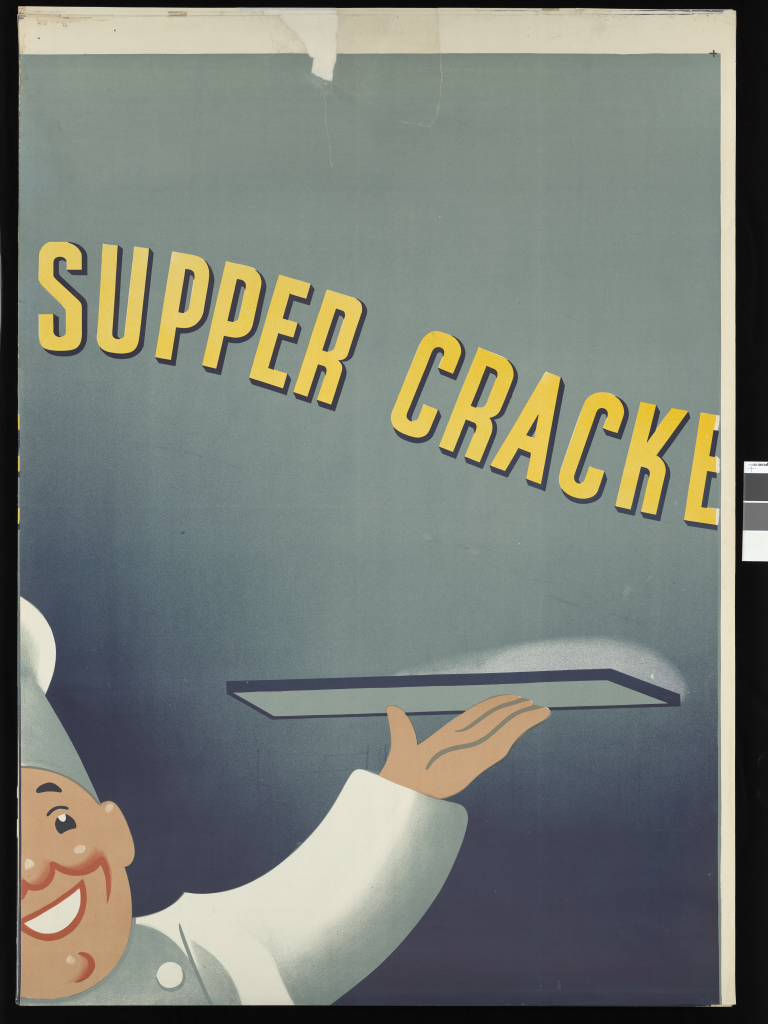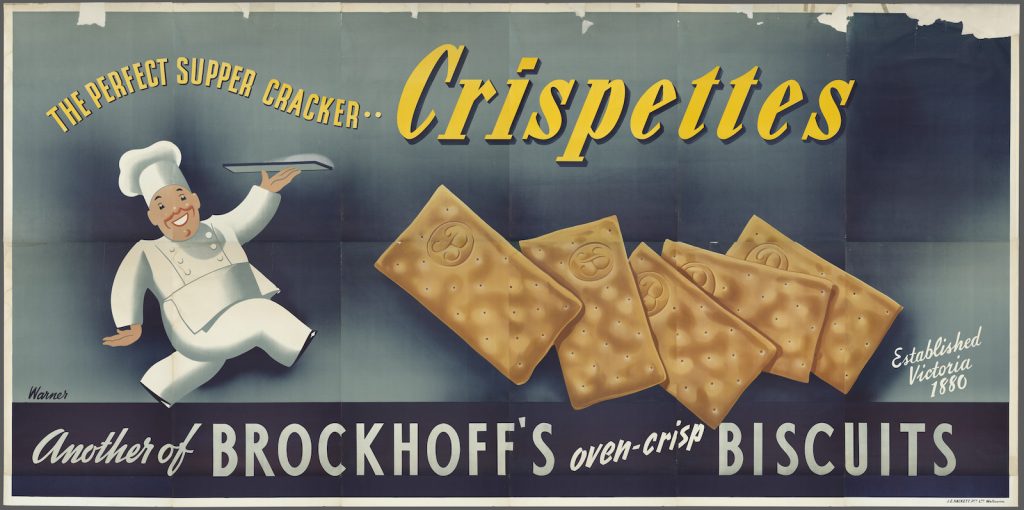As with any good recipe, the results are best shared! With conservation treatment of Brockhoff’s Crispette billboard complete, it was time for digitisation to create wider public access. And so, the 18 individual sheets were transferred to the expert care of the Library’s Digital Production team.

Before digitisation could begin Digital Production staff viewed the material with Conservation staff in their lab to consult about the best way to handle and digitise the collection material. Specifically, how the material could be laid flat for digitising as the material had been stored rolled up and was very curled.
It was important for the sheets and their edges to be flat, as the digitisation request was for 18 individual sheets to be captured separately then aligned and combined in Photoshop to produce one final image. To achieve this, the decision was made to press the sheets for 2-3 weeks as a part of the conservation treatment process.
After this time the sheets were transported down to the imaging studio by Conservation staff, who stayed on hand to help place each sheet under the camera and ensure that the edges remained flat for capture.
Each sheet was placed over black velour fabric on the floor under an overhead capture stand with a PhaseOne XF camera, Schneider-Kreuznach 80mm lens, and IQ4 150mp digital back.
The camera was perfectly centred and aligned overhead, at a height of approximately 2.4 metres. Two Profoto flashlights with 3′ x 4′ soft boxes were placed at 45-degree angles to light the sheets evenly.
The height and focus were locked in, a custom lens cast calibration was performed, and light readings were taken using a QP calibration card to determine exposure and custom white balance. This ensured accurate colour consistency across all 18 captures.
The images were processed in Capture One software and stitched together in Photoshop to create an Access file 15000 pixels wide at 300ppi resolution, resulting in a 320Mb file.
The digitisation process took around 2.5 hours to capture, with a further 3 hours spent combining the individual images to produce one final image. Feast your eyes on the reconstructed image or scroll down for a sneak preview of the individual captured sheets!


This post was written by Bart Geraedts from Digital Production.


What an amazing achievement! Thanks so much for your hard work, and for the excellent documentation and photography of the process. Wonderful!
How wonderful, and and so interesting! Thank you to everyone involved and for sharing it with us. We’re so lucky to have the SLV!
Fascinating, so glad that history can be captured by the clever staff of the Library. Great read, thanks for sharing this
Terrific to see it come together and preserved. Well done and thanks for sharing!